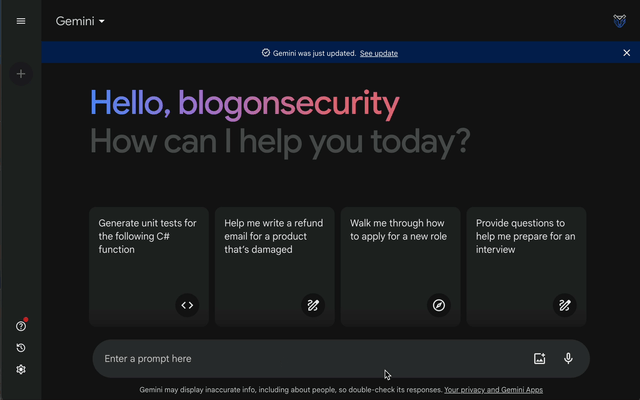How to run data breach simulations
Need to run a data breach simulation? Learn how to organise and execute them quickly and efficiently

Running effective incident simulations is an incredibly challenging task. Security teams often run at maximum capacity and have limited time for non-essential activities. This is especially true with data breach simulations. Security teams focus most energies on detecting and responding to malicious network activities occuring early during attacks. In this context, data breaches typically are the end result, rather than the trigger, of a successful network compromise. Because of these constraints and considerations, data breach simulations must perfectly balance planning efficiency, realism and value generation - fortunately, by using a few simple tricks, this balance is generally achievable for most security teams.
In most situations, running a successful data breach simulation does not require the design of complex scenarios. The more efficient you can be while designing and organising the simulation, the easier it will be to obtain the necessary buy-in from all stakeholders involved. It will also make it easier for the simulation team to execute.
A quick and efficient data breach simulation is achieved in four key steps:
- identifying a plausible, but simple data breach scenario
- Securing buy-in from stakeholders
- Building a strict simulation plan
- Executing the simulation effectively
Identifying the scenario
Picking the correct scenario is the single most important factor in designing a data breach simulation. If you design your simulation based on a realistic and plausible situation, participants will believe that a real incident has occured.
The most effective data breach simulations are indistinguishable from the real thing and offer the strongest learning experience for all involved. While the exercise may cause some undue stress on participants, the simulation will offer a more immersive environment, mimicking the stress and decision-making processes encountered during an actual attack.
You can of course run simulations where participants are aware that they are running a fictitious exercise. However, their reaction, decision-making and performance will largely be influenced by the knowledge that the simulation is, in fact, fake. When organising data breach simulations, always opt for running realistic scenarios where participants are not informed about the training nature of the event.
When working to identify the right simulation scenario, consider developing one based on an incident that has occured in your organisation. Previous incidents are a great source of inspiration when designing data breach scenarios.
You shouldn’t design a training scenario that is entirely identical to a previously occured data breach. That will most likely tip off the participants in the simulation. However, using a similar scenario will give your team the chance to properly train the organisation in responding to a scenario that might realistically occur again. It will also help assess whether the lessons learned from previous incidents are applied in real-life situations.
If your organisation has never suffered a data breach (or you simply do not want to test a scenario that has previously occured) pick a fresh scenario. There are two things that you can do to organise a plausible scenario.
First, keep the scenario technically simple. You should try to avoid as much technical set-up as possible. Considering most data breaches occur due to human error you can design simple data breach scenarios based on accidental data disclosures.
Scenarios such as the accidental sharing of confidential data via non-sanitised Excel documents or the accidental cc’ing of externals in email threads are all highly plausible incident triggers to pick for your simulation. The key is to keep it technically simple and based on human error.
Secondly, make sure to involve colleagues from product development or customer-facing teams. Their input can prove extremely valuable during the early ideation stages. When meeting with such teams, make sure to discuss how they typically interact with customers.
If possible, ask them to elaborate on situations where customers ask for data or analytical insights. It is during these occasions that conditions for a data breach are most likely to occur. They also offer plenty of opportunities for your team to design simulations based on human error.
In general, product development and customer-facing teams provide a goldmine of data breach simulation ideas. Even simply asking them for war stories and close calls when it comes to data processing and exchanging should yield your team great ideas.
Securing stakeholder buy-in
Securing buy-in from key stakeholders is crucial to run a successful simulation. When key stakeholders understand the purpose and benefits of the exercise, they’ll provide your team with the necessary mandate to execute the simulation and disrupt day-to-day operations.
Additionally, buy-in from senior stakeholders ensures your team has adequate contingency cover in case the exercise goes wrong. This broad involvement allows for a more comprehensive test of communication protocols, response procedures, and overall preparedness. Without buy-in, stakeholders may view the simulation as disruptive or unimportant, hindering its overall effectiveness.
The definition of clear goals should always be the starting point when building out the scenario. Goals will give the exercise a solid business justification. More importantly, they will help your team understand when the simulation must end: once all the goals of the simulation are covered (or not covered due to a failure of some sort) during the exercise, this provides a clear signal to your team to end the exercise.
Simulation goals should always be formulated with specific, measurable, achievable, relevant and timely language. Additionally, you should always strive to define ambitious goals. After all, the point of running such tests is to put your processes and service level objectives (SLOs) under stress.
When defining objectives, think of specific contractual commitments or SLOs that your company promises to customers. Then, think of situations where such commitments may become difficult to honor. That is the exact space where you want to define stretched goals for your data breach simulation.
For example, consider a company that contractually commits to notifying customers within 24 hours of a data breach being discovered and confirmed. An adequate stretch goal for a data breach exercise would be to assess whether such commitments could be honoured during weekends. Such a goal is clear and also provides an excellent business case to secure senior stakeholder buy-in.
When selecting stakeholders to be involved in the exercise, always aim to keep the number of participants as small as feasibly possible. Avoid involving a large group of people and keep logistical complexity as manageable as possible.
A minimum list of stakeholders should incorporate the following colleagues:
- Your boss and their boss: You should always have a sign-off from your boss and at least a stakeholder one level above them. To ensure the strongest mandate and sign-off you should aim to have at least one member of the company’s executive management approve a data breach exercise. Alternatively, consider securing the approval of the Data Protection Officer.
- One member of the security team: At least one member of your team should be involved in the planning of the data breach simulation. If necessary, you can involve more than one member of your security team. For example, if you need to secure the help of additional colleagues for logistical or planning reasons, it is always best to try and secure the involvement of more colleagues from the security team, rather than other departments. By doing so you can keep your simulation planning strictly confined to members of the security team. Hopefully, this will ensure planning confidentiality is maintained.
- An incident trigger: You will need a colleague to act as the incident trigger. They will be responsible for creating the conditions that lead to the incident and - most probably - will be reporting the data breach to your incident response hotline.
- A member of legal: a colleague from the legal team should always be notified about a planned data breach simulation. They will act as a contingency contact in case things go wrong (more on that later).
In addition to the above stakeholders, there are two more that you can consider involving to increase realism: a customer and the relevant customer relationship manager. While involving customers in data breach simulations opens up your company to a potentially uncomfortable degree of transparency, it sends the strongest possible signal that you take security seriously.
A trusted and security-minded customer should jump on any opportunity to jointly test the resilience of your services. Additionally, they can help with increasing the overall realism of the simulation. For example, they could help with creating a realistic data extraction request that ultimately leads to a data breach incident. Their participation and the email trail that they would help create would add credibility to the exercise and convince all participants that they are responding to a real situation.
To secure the involvement of a customer you can offer to share the final simulation report with them as compensation for the time spent assisting your team. In any case, before involving a customer make sure to first consult internally with the relevant customer service representative. They will help you understand whether the customer you intend to involve is an adequate fit for such simulations or whether their involvement will end up being the cause for more trouble for your team or the company.
Building a simulation plan
Running a successful data breach simulation involves balancing realism with the need to keep the exercise under control. Building a realistic simulation plan that is sufficiently controlled in its execution instruction is key to ensuring things go smoothly.
There are four things that your team must do to build a properly controlled simulation plan: define a clear timeline, define comprehensive contingency plans, build prescriptive communication instructions and plan for the safe building, storing and handling of forensic artefacts.
Define a clear timeline
All informed participants must know exactly what and when things will happen during the exercise. Clear coordination is needed to ensure the simulation is competently executed and steered. Defining a simulation timeline ensures that all informed participants are on the same page with regard to the main events occuring during the exercise.
The timeline must be defined during the early stages of the scenario design. It must be included in the simulation proposal deck for all informed participants to review and provide feedback on it.
A well-defined timeline must cover, at a minimum, all the steps involved in triggering the incident as well as any “injects” (i.e. additionally planned or unforeseen events that will be triggered during the incident to increase simulation complexity) that will occur during the simulation. Additionally, it must include all the steps that will be taken to close down the simulation, including a detailed timeline indicating when the debriefs will take place and the final reports shared.
You should spare no detail when building your simulation timeline. Every step must be numbered, comprehensively described and tagged with a timestamp defining when the event will occur during the simulation.
In addition to the timeline, you should build a separate table listing all participants in the simulation and describing their involvement within each step of the exercise that is assigned to them.
Define comprehensive contingency plans
A comprehensive contingency plan will ensure your team is prepared to steer the simulation and execute appropriate damage control if the exercise takes an unexpected turn.
Contingency planning is especially important if you involve customers in the simulation. They should also be involved in the formulation of such plans and have steps in place to avoid triggering false alarms on their end.
Your contingency plan should also detail the conditions for the simulation to be stopped. Even in this case, no detail should be spared. Your team must produce a comprehensive list of conditions that dictates when a simulation must be stopped.
Finally, the contingency plan must also include a simulation exit protocol to be triggered in case the simulation goes wrong. The exit protocol must especially cover situations where a simulation accidentally triggers a real incident response procedure. In such a case it must clearly define who is responsible for stopping the exercise, notifying the company (and involved customers) of the false alarm and roll back all simulation efforts.
Build strict communication plans
In order to trigger a realistic data breach simulation, you should build a believable trail of communications leading up to the data breach being reported.
For example, let’s imagine that we want to simulate an accidental leak of personal data to a customer via an unsanitised Excel spreadsheet. To create a realistic incident trigger and a believable simulation, we may want to generate two to three days’ worth of email exchanges between the customer and your organisation.
In such an exchange, the customer could be asking for some data insights for research purposes. In SaaS companies, for example, customers frequently make requests regarding the utilisation of certain features they are paying for.
In such an exchange a participating customer could send an email request for a data extract two days before the incident is triggered. During those two days, your team would be sending emails between them as they coordinate the data extraction and sanitisation. During one such exchange, the customer could be mistakenly cc’d in an email containing an unsanitised, work-in-progress report, leading to the data breach.
Crafting such an email trail requires putting a strict communication plan in place. Such a plan will not only help participants with creating the right incident artefacts, it will also ensure that the email exchanges occur in a controlled manner, reducing the risk of false alarms.
When building a strict communication plan, you should:
- Make sure to include a table of participants who are within the scope of the communication plan.
- Explain what the participants are expected to do
- Specify the exact communication timeline, down to the hour, detailing when emails are to be sent and by who
- Make sure to provide templates of emails that the participants can copy and paste in their mail clients. Avoid giving participants the freedom to write their emails. Use instead pre-created email templates
- Make sure to add a section explaining what to do if things go wrong. This section should cover what to do if a participant fails to send a communication at a specific time as well as how to safely stop activities if the communications trigger false alarms
A strict communication plan will ultimately reduce ambiguity and workload across all participating stakeholders. Ultimately, it will contribute to triggering a data breach simulation in a safe and (broadly) effortless manner.
Building, storing and sharing simulation artefacts
To create a data breach simulation you not only need to fabricate realistic email communications, you must also produce realistic artefacts. This is important for two aspects: first and most obviously, it makes the exercise believable to uninformed participants. Secondly, it grants technical depth to the simulation.
Creating a realistic artefact will allow you to trigger a full incident process, testing not only the actual steps in the process but also assessing how the response team retrieves, stores, handles and analyses the contents of the artefact. The more detailed you make the data breach simulation, the more steps in the process you are going to be able to assess and the more lessons you are going to extract.
Taking our previous data breach simulation example, we may want to create a realistic Excel document containing a hidden tab with a list of companies and their employee names, emails and phone numbers. Such a detailed artefact will allow you to evaluate how the response team (in collaboration with the DPO) assesses the data within the artefact when determining the severity of the data breach.
No matter how realistic you want your artefacts to be, you should never include real customer data in them. In this case, AI chatbots such as ChatGPT or Gemini can help generate large amounts of fake customer data with no programming required.
For example, Gemini can generate hundreds of employee names and email usernames to create believable, yet fictitious, confidential datasets.
With a short prompt, we can create a table of employee names with accompanying email usernames:
Create a table list of [INSERT NUMBER] fictitious, unique names for employees of a company. Then, for each name create a fictitious email username combining the name and surname, separating them with a . in the middle
You can even ask ChatGPT to create names from specific countries or locations, change the gender composition of the results as well as control how the data is displayed in the table:
Create a table list of [INSERT NUMBER] fictitious, unique international names from Geneva. Make sure the table lists name and surname in separate columns. Make sure to include different genders, with 80% of the names being female and 20% male. Then, for each name create a fictitious username combining the name and surname, separating them with a . in the middle
The more prescriptive you make the prompt’s instruction, the more you can tailor the results to accurately simulate data from a customer company.
Gemini can be used to create additional pieces of fake personal information, such as phone numbers. However, the platform will block your request on privacy grounds if you directly ask it to create fake phone numbers.

Instead, you must indirectly ask the platform to create fictitious phone numbers for you, as shown in the below query:
Create a table list of [INSERT NUMBER] unique numbers each containing 7 integers. Then add the numbers 044 or 041 in front of each of them
Gemini will happily obey such instructions so long as the prompt never explicitly contains words such as phone number, country or area code or anything that could tip off its privacy protections. By leveraging AI chatbots and some clever editing in Excel (or code editors) you can create very large datasets to simulate files containing personal data.
You should avoid inputting customer names in your prompt. Notice, for example, that in the first query we deliberately instructed Gemini to only create usernames, not full email addresses. To create a realistic, yet fictitious customer email dataset you have to extract the data from Gemini, copy it to Excel and only add the customer’s email domain to the usernames after the data is stored in your Excel.
Finally, be mindful that the more realistic you make your simulation artefacts, the more care you will have with storing them and controlling their circulation. Any dataset that looks authentic may be mistaken for the real deal if its distribution is not adequately controlled, leading to false alarms.
When creating fake, yet realistic, artefacts always ensure these are only accessible to your team. If participants in the exercise must simulate exchanging data between them, create additional (possibly empty) files for them to exchange and never allow them to open, handle or transmit fake datasets (the file contents, after all, should not be viewable in email changes or within logs).
Such datasets should always be handled by competent responders and never shared with customers, no matter their level of involvement in the simulation. Finally, store fake datasets in folders or shares that are protected and only accessible to those colleagues participating in the response simulation.
Executing the simulation effectively
Once you have properly created and set up your data breach simulation, you should also take steps to ensure the exercise is carried out effectively.
First, make sure that your simulations are coordinated by a competent and experienced incident commander. While you can rotate the incident commander role among different team members, you should always make sure they are experienced in handling real incidents.
Seasoned incident responders will ensure your organisation executes the simulation with a level of realism that translates into high-fidelity reactions. In turn, this will allow the gathering of more accurate observations and lessons-learned as to how the organisation responds.
Finally, experienced incident commanders will be masterful in spotting opportunities for improvement while coordinating the exercise, acting as an additional data-gathering point for your team.
Secondly, like in a real data breach scenario, the commander should keep an incident response log. Such a log is crucial for effective post-incident analysis. It should meticulously document key details throughout the incident lifecycle including the date and time of initial detection, affected systems or data, containment steps taken, and communication actions with relevant parties.
Additionally, the log should record the names of individuals involved in the response, key discussions or decisions taken as well as all remediation steps undertaken. The log should also include timestamps for each event recorded to provide a clear timeline of events.
Finally, during the simulation, the incident commander should include an observation column within the log, to capture lessons-learned and improvement opportunities as they are observed in real-time.
Thirdly, once the simulation is over, you should produce a report. For this simulation report to be valuable to the organisation it must contain at a minimum the following sections:
- An executive summary laying out the objectives of the simulation, highlighting positive observations and summarising lessons learned
- A condensed timeline of the key events taking place and decisions made during the data breach exercise
- A condensed table summarising the main improvement observations, how the company should rectify the shortcomings and the planned timeline to resolve the observed issues
- An appendix containing slides from the simulation proposal. In particular, the appendix should contain a detailed explanation of the executed scenario, the participants involved, planning assumptions, how the exercise was triggered and what contingencies were in place
By producing an incident response report containing the above information, your team will create a crucial record of the entire event. This document will prove valuable for regulatory compliance purposes and demonstrates a commitment to responsible data handling.
Finally, a well-crafted report will act as a powerful communication tool to transparently inform affected parties about the simulation and share how the experience will ultimately enhance security.
Conclusion
While running data breach simulations will continue to remain an incredibly challenging task, we hope that the tips in this article help you and your team to organise and execute them effectively. We also hope that some of the tips will help with accelerating the proposal and setup phase of the simulation.
By crafting simulations based on simple scenarios, using detailed plans and leveraging AI chatbots to automate the creation of artefacts, you should be able to create compelling data breach simulation proposals that strike the right balance between efficient organisation and realistic execution.




